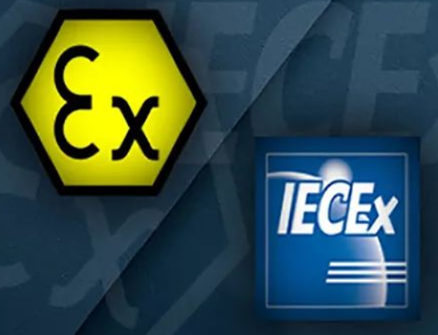
It is essential for equipment products that have passed ATEX explosion-proof certification or IEC Ex certification to be put into use in any potentially explosive or potentially explosive environment, and it is an important guarantee to assist in creating production safety. There are many working conditions that can be defined as being in an explosive environment, some of which are more obvious, such as oil drilling platforms, and some working conditions that you may not realize are also explosive, such as flour mills.
Most of us have heard of ATEX and IEC Ex certifications, but the question many people ask is - what makes them so unique and worthy of recognition? Today we will popularize the professional knowledge in this certification field.

ATEXExplosion proof certification
The ATEX Explosion Proof Certificate Directive is named after the French word "ATmosph è res Explosives" and is intended for manufacturers of equipment intended for use in potentially explosive environments. The directive applies to a wide range of equipment, including fixed offshore platforms, petrochemical plants, flour mills, and other potentially explosive environments. This directive also applies to components necessary for safe use, as well as safety devices that directly benefit the safe use of equipment within the scope of application. These devices can operate in potentially explosive environments.
ATEX explosion-proof certification is mandatory throughout Europe, covering all stages from manufacturing to equipment installation and use. The CE mark is a mandatory mark, and products that comply with all provisions of the ATEX directive must be affixed with the CE mark. Therefore, the CE mark affixed to explosion-proof products is a special proof of compliance with the basic requirements of the ATEX directive and the conformity assessment procedures stipulated in the implemented directive.
IECExExplosion proof certification
The IEC Scheme for Certification to Standards for Electrical Equipment for Explosive Atmospheres (IECEx Certification System) was established in 1996 and is an international organization for explosion-proof electrical product certification. The IECEx certification system currently has 22 formal member countries, including major industrial countries in Europe, the United States, Australia, as well as countries such as Russia, South Korea, Singapore, and Japan.
IECExThe ultimate goal of the system is to be accepted worldwide

However, currently, explosion-proof products exported to EU countries only recognize ATEX certificates and do not recognize IECEx certificates.
Some benefits of choosing products with IEC Ex certification include:
---Reduce testing and certification costs
---Shorten time to market
---The international community's confidence in the product evaluation process
Like ATEX explosion-proof certification, IEC Ex certification provides assurance and ensures that all aspects from equipment and installation to the manufacturing, operation, and maintenance of certified products comply with IEC international standards and are suitable for their purpose.
ATEXDifferences from IECEx:
ATEX is a mandatory certification in the European Union, and all explosion-proof equipment circulating in the EU market must pass the ATEX explosion-proof directive 94/9/EC certification before it can be sold.
IECEx is a voluntary certification that is not mandatory and is currently not recognized by the EU and North American markets. Products entering the EU and North American markets require re certification.
Service hotline: 18924609560 (same WeChat account)